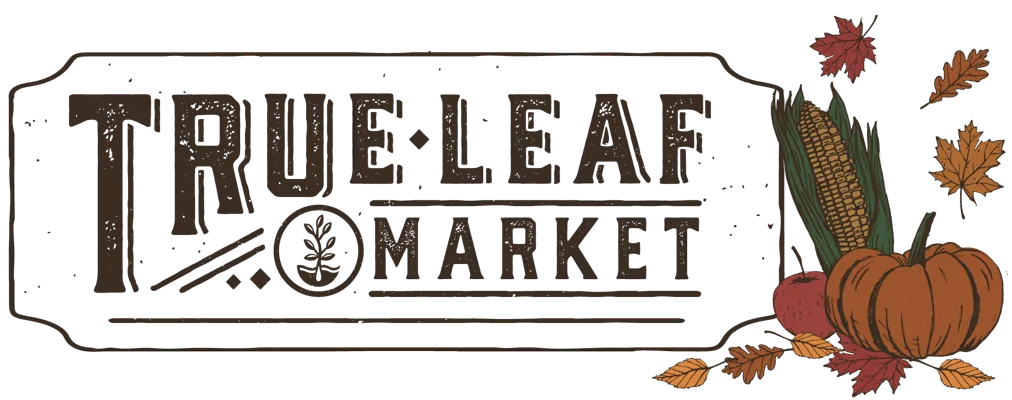Download Free Vegetable Growing Guide PDF
Growing Fish Hot Peppers in the Vegetable Garden
Fish Pepper seeds should be sown indoors about 6-8 weeks before your area’s last expected frost date. Since peppers need warmth to germinate, it’s important to keep the seeds in a warm, controlled environment with a consistent temperature of 70-85 F. If you’re using seed-starting trays or pots, fill them with a good quality, well-draining seed-starting mix.
When sowing the seeds, plant them at a depth of about 0.25 inches. Lightly cover the seeds with soil and gently press down to ensure good contact. Mist the soil lightly with water to keep it moist, but be careful not to overwater. Seeds typically germinate in 7-14 days, though it can take longer if temperatures are cooler. Once the seedlings emerge, ensure they get plenty of light from a sunny windowsill or a grow light for 12-16 hours per day.
Once the seedlings are about 6-8 weeks old and have developed a few true leaves, they must be hardened off before being transplanted into the garden. Each day, increase their time outdoors and gradually expose them to more direct sunlight. After about a week, they should be ready to handle the outdoor environment full-time. Transplant the seedlings into your garden or containers when all danger of frost has passed and the soil has warmed to at least 60 F.
Water the plants deeply when the top inch of soil feels dry, aiming for around 1-2 inches of water per week. If growing in containers, ensure they have adequate drainage to prevent water from pooling at the bottom. When transplanting, it’s a good idea to amend the soil with organic compost or a balanced slow-release fertilizer to provide essential nutrients. After the plants produce flowers, switch to a phosphorus-rich fertilizer to encourage fruiting. Fish Peppers benefit from being fertilized every 3-4 weeks during the growing season. Avoid high-nitrogen fertilizers.
Harvesting Organic Fish Hot Peppers
The fruits start yellow-green with some striping and then gradually transition through shades of orange and a deep red when fully ripe. You can harvest them at any stage of ripeness, depending on your flavor preferences. To harvest, simply snip or twist the peppers off the plant, careful not to damage the stems.
About Fish Hot Pepper Garden Seeds
The Fish Pepper is an heirloom variety with origins tied to the African American communities in the Chesapeake Bay area, particularly in Baltimore and the Mid-Atlantic. It was traditionally used in fish and shellfish dishes, which is how it earned its name. It’s been around since the 19th century and was nearly lost until seed savers preserved it.
Since this is a hot pepper variety, wearing gloves when handling the fruit is advisable, as the oils can cause irritation.
Tips From Our Gardeners
"For a milder flavor, harvest when the peppers are still striped with white and green. If you prefer a hotter, more complex flavor, wait until the peppers have fully ripened to red."
 |
- Lara Wadsworth, True Leaf Market Writer |
Other Resources
Organic Fish Hot Pepper Seeds Per Package:
- 300 mg - Wholesale - Approximately 50 Seeds
- 0.25 oz - Wholesale - Approximately 1,200 Seeds
- 1 oz - Bulk Seeds - Approximately 5,000 Seeds
- 4 oz - Bulk Seeds - Approximately 20,000 Seeds
- 1 lb - Bulk Seeds - Approximately 80,000 Seeds
Non-GMO Organic Fish Hot Pepper seeds are available for Fast Free Shipping on qualifying orders.
=======
ATTRIBUTES
Basic Info
| Latin Name: |
Capsicum annuum
|
| Pepper Type: |
Hot - These peppers all have some heat and usually rank at least 100, but usually 500 or more on the Scoville scale and have heat ranging from mild to extremely hot. |
| Fish Hot Pepper Color: |
Green, White, Yellow, Red |
| Fish Hot Pepper Flavor: |
Fruity and smoky. |
Growing Info
| Hardiness Zone: |
3, 4, 5, 6, 7, 8, 9, 10, 11 Technically a tender perennial, but commonly grown as an annual. Perennial in zones 10 and 11. |
| Days to Maturity: |
80-90 (from transplant) |
| Days to Germination: |
7-10 |
| Seeding Depth: |
0.25 inch |
| Plant Spacing: |
12-24 inches |
| Row Spacing: |
24-36 inches |
| Plant Height: |
18-24 inches |
| Growth Habit: |
Upright |
| Soil Preference: |
Well-draining, loose (sandy loam), slightly acidic (6.5 pH), and moisture retaining. Too much nitrogen in the soil may lead to more foliage production and less fruiting, similar to tomatoes. Peppers also need sufficient amounts of phosphorus and calcium. We recommend using a balanced fertilizer for the best results. |
| Temperature Preference: |
Warmer (70-85 F). During high heat, foliar and flower development slow or pause until temperatures return to the preferred range. |
| Light Preference: |
Full Sun |
Other
| Direct Sow: |
No |
| Start Indoors: |
Yes. Start Indoors 6-8 weeks before your last spring frost date. Harden off and transplant when seedlings are 6-8 inches tall. Bury the stem slightly deeper than the root ball. Avoid planting hot and sweet peppers right next to each other, as they can cross-pollinate, potentially affecting the flavors of your harvested peppers. |
| Pepper Pollination: |
Peppers have perfect flowers (male and female parts) and will self-pollinate. However, wind and pollinator activity may increase success rates of fertilization and fruit production. |
| Plant Width: |
18-24 inches |
| Deer Resistant: |
Yes |
| Scoville Heat Units: |
5,000 to 30,000 |
| Heat Level: |
Medium - 2,500 to 30,000 on the Scoville Scale. Example: Jalapeno |
| Growth Speed: |
Mid - Ready for harvest around 76 to 90 days from transplant. |
| Germination Temperature: |
80-90 F |
| Pests and Diseases: |
Deer resistant. Peppers are commonly susceptible to cutworms, aphids, flea beetles, bacterial spot, Phytophthora, sunscald, and blossom end rot. To avoid or reduce problems with pests and diseases, stick to a regular watering schedule (drip irrigation is preferred), plant into well-draining soils, and utilize practices such as crop rotation. When taking pest control measures, consider utilizing integrated pest management principles by using mechanical removal, biological control, and other cultural practices before turning to chemical agents. |
| Garden Size: |
Greenhouse, Garden Plot, Raised Bed, Container |
| Pepper Use: |
Sauces, salsas, and pickling. Traditionally added to seafood dishes. It can also be dried for seasoning. |
| Climate Tolerance: |
Heat |




















